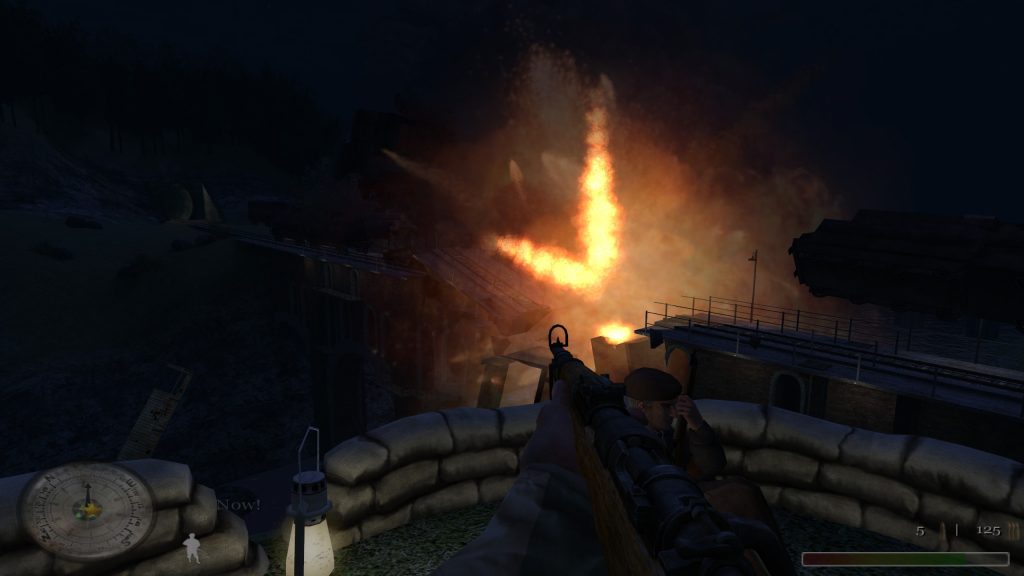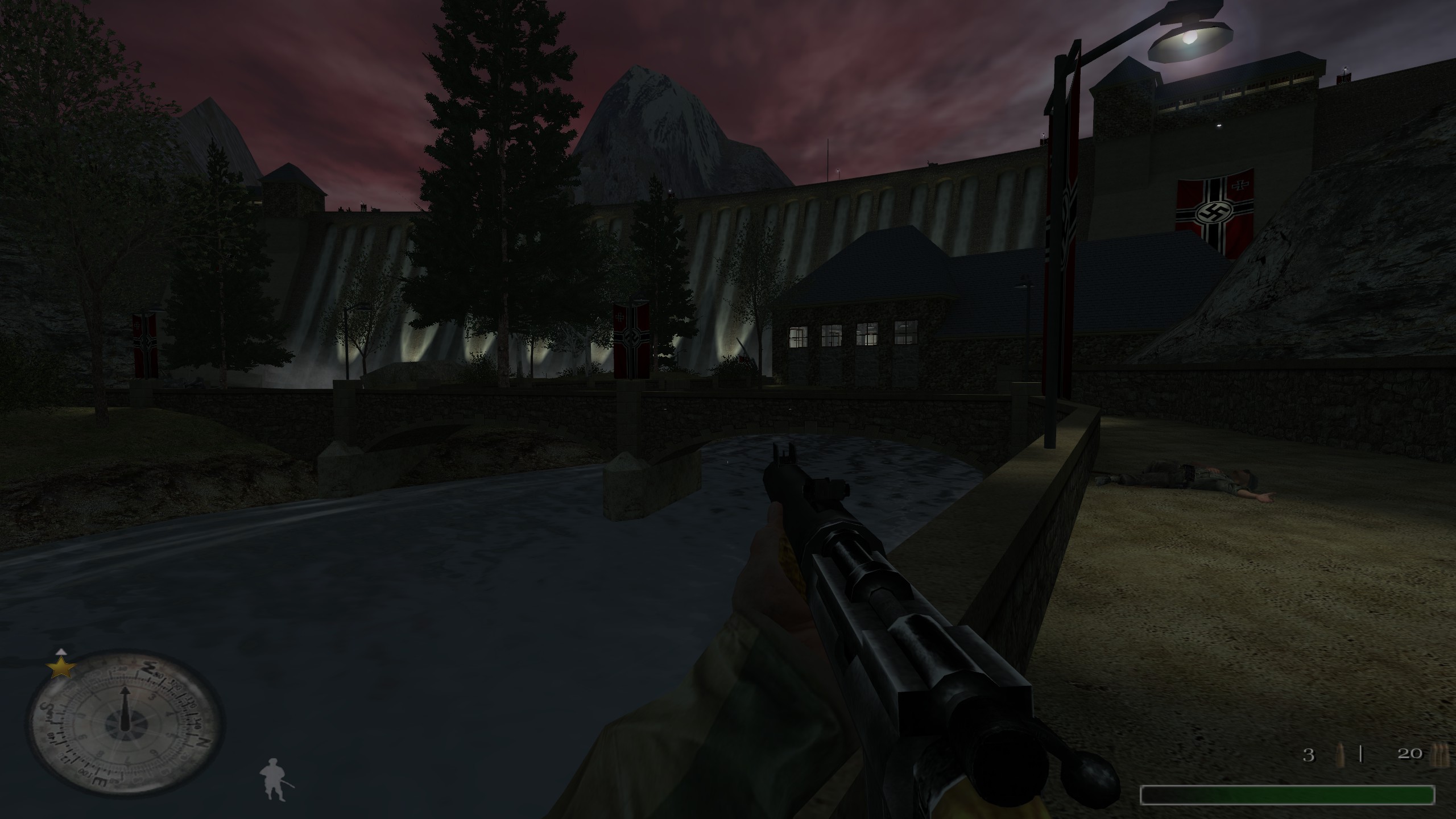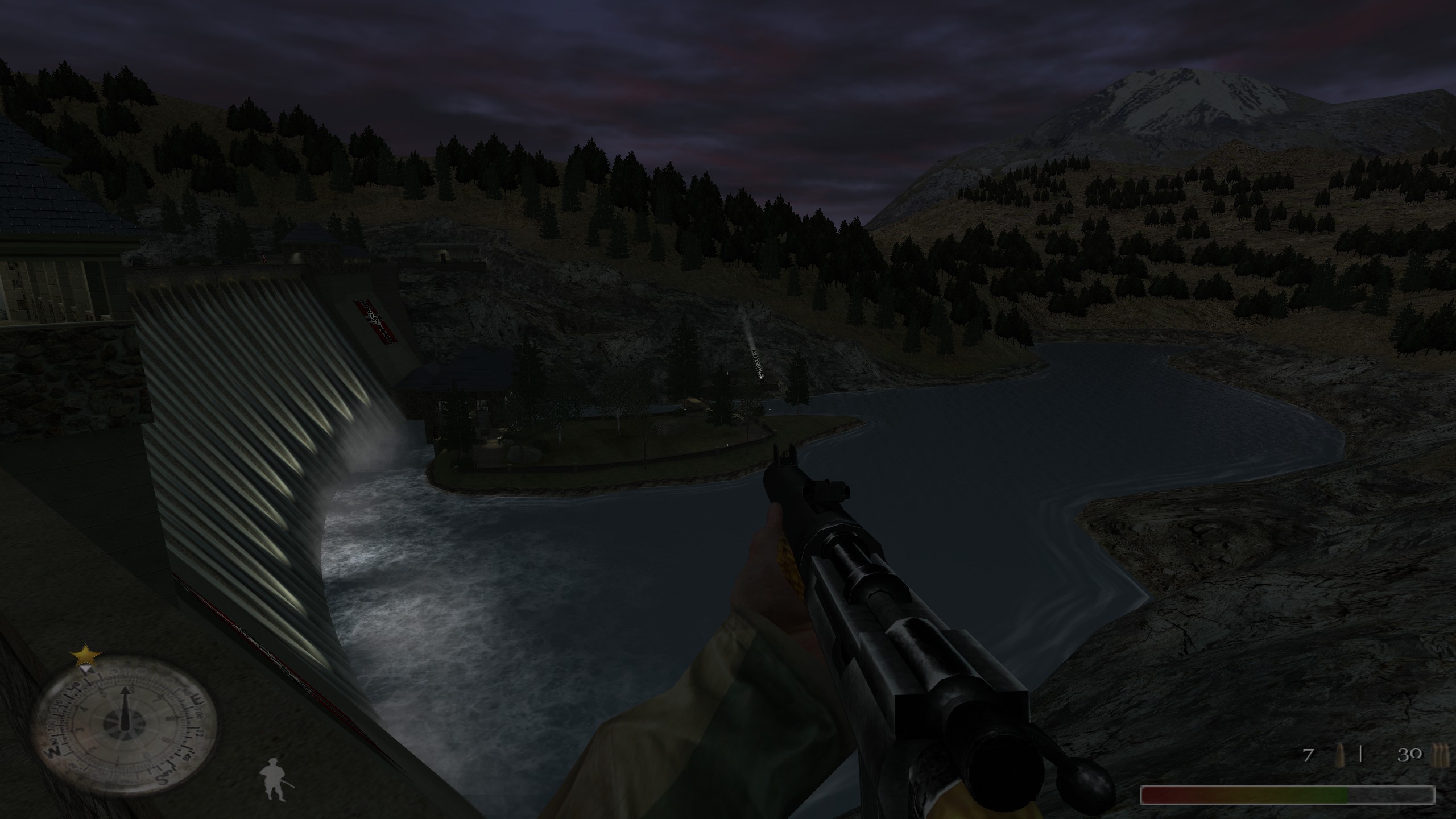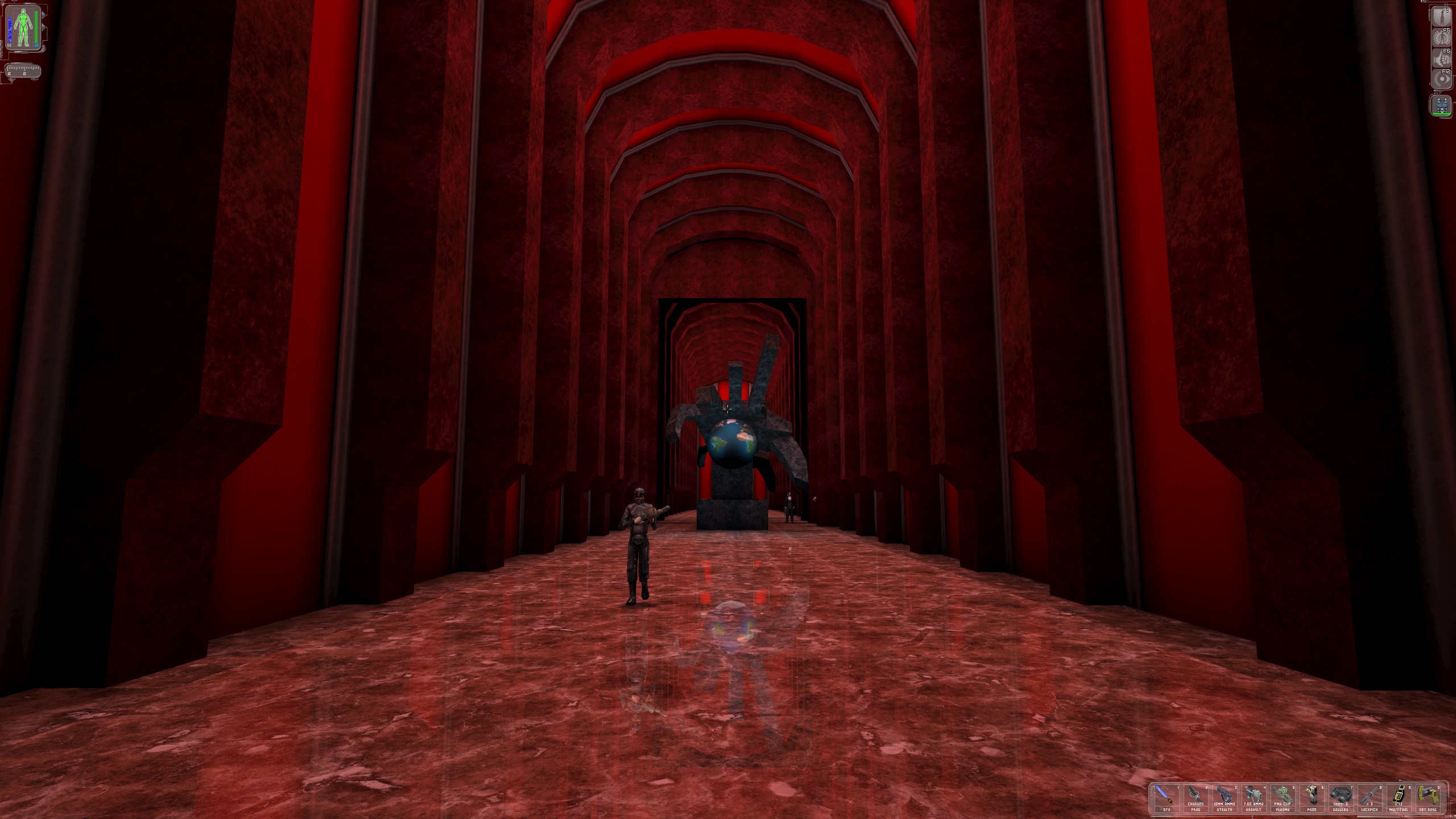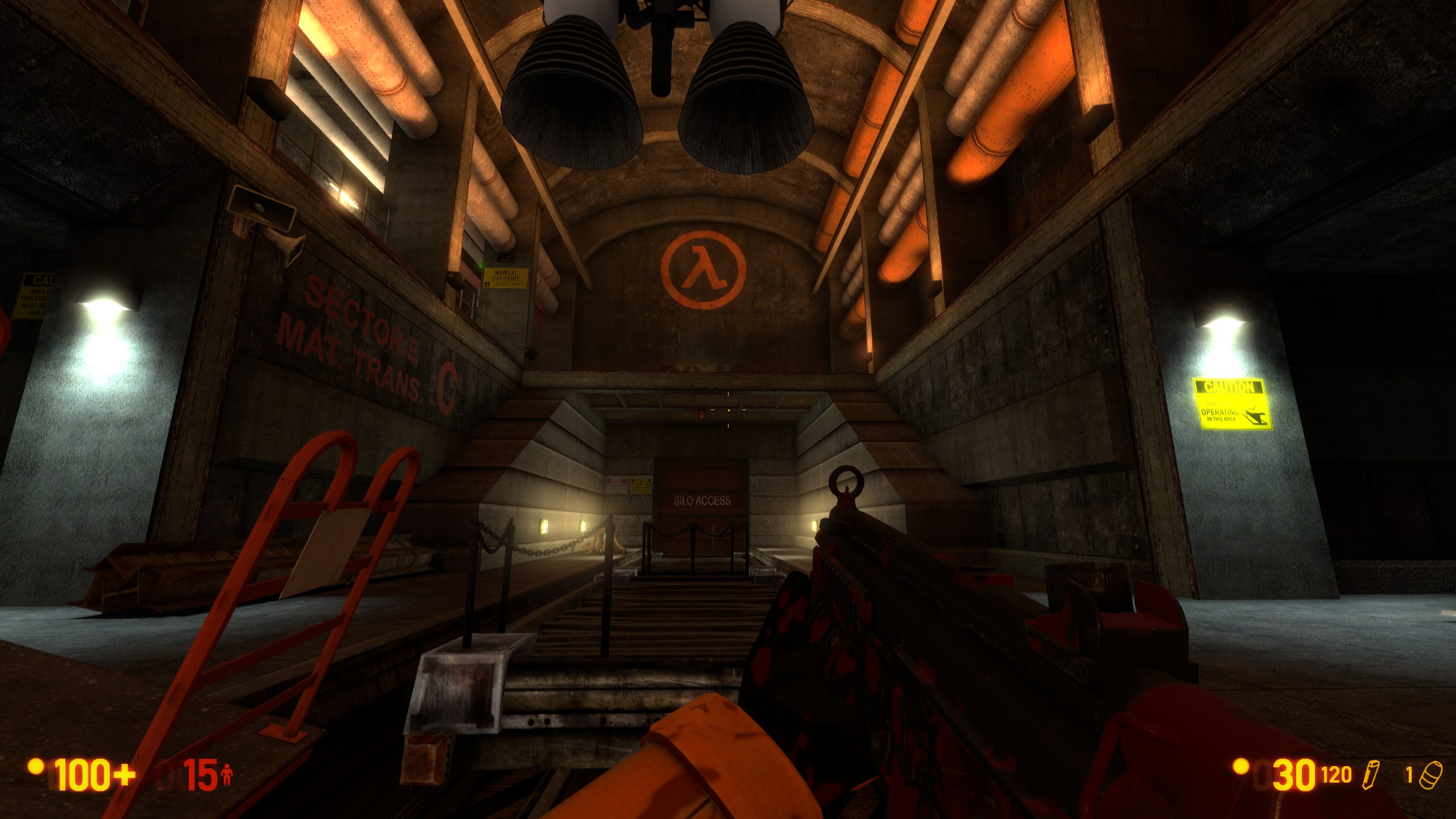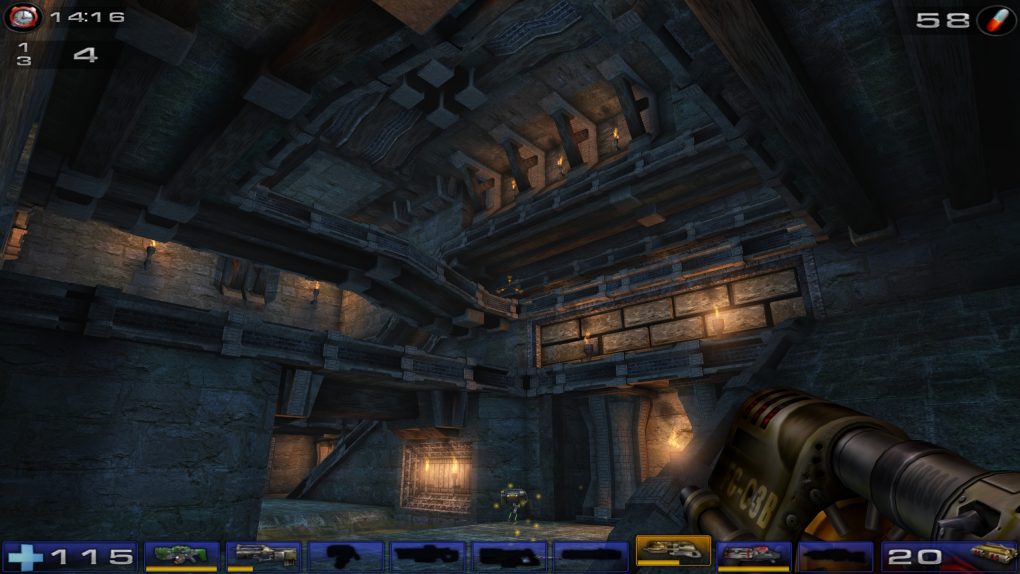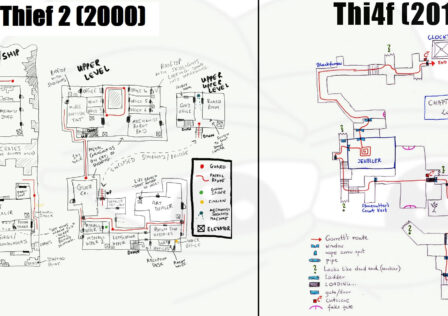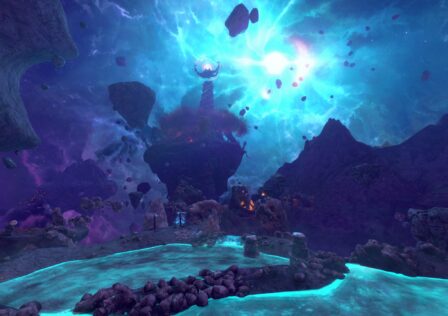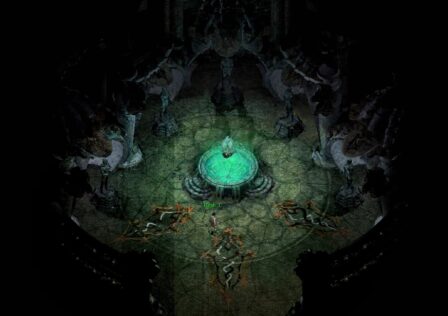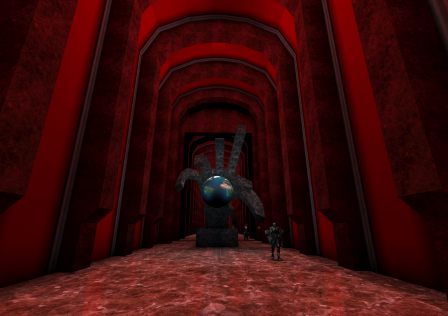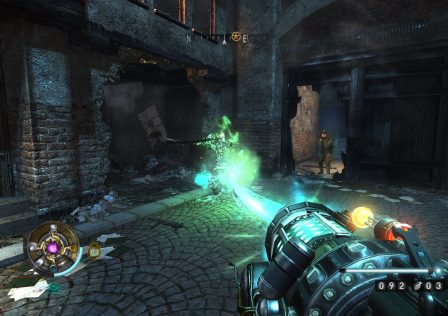The majority of bestselling video games belong to a franchise, and it often comes as a surprise to today’s gamers that most of these multiplatform franchises originated as PC exclusive games. In this article, we present a list of multiplatform game franchises that originated on PC, usually with their first game (but sometimes more) being PC exclusive at least for a year. We will also discuss the impact that becoming multiplatform had on each franchise.
The impact of multi-platform success was usually significant and the older games in each franchise are usually quite different than the newer games; this is because the very first game in each franchise was designed to be unique in order to stand out and capture an audience, but as time went on they conformed to the changing gaming industry, which in this day and age means dumbing down the game in all aspects, removing content in order to spend as little money as possible on the game, and reusing the same formula (with all its restrictions) that other successful games in the genre use. For this reason, the older games in every franchise shouldn’t be skipped, as they almost always offer something different and typically they offer more.
While other popular franchises did not begin as PC exclusive, most of them still trace their design back to PC exclusive games (excluding games originating from Japan of course), like BioShock being a spiritual successor to the PC exclusive System Shock franchise. There are also franchises like StarCraft that fit the criteria of this article, but we do not think it is necessary to include them since their popularity on consoles is not great enough. Everyone already knows they originated on PC.
Also see our companion imgur gallery for this article here.
Battlefield
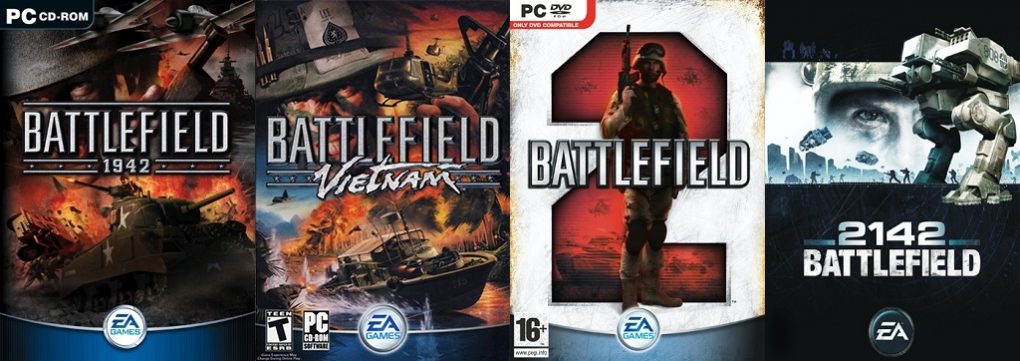
First Release: Battlefield 1942
First Release Date: 2002
Genre: FPS
Developer: DICE
Publisher: Electronic Arts
Battlefield is one of the most popular multiplayer shooter franchises today. Its popularity skyrocketed with the release of Battlefield 3 in 2011, largely due to it being an impressive technological showcase. Its most recent release was Battlefield 1, poorly named but popular nonetheless, and seen as a bit of a turnaround for the franchise due to it having a much more stable launch than Battlefield 4 and not being poorly received like Battlefield: Hardline was. Although its single player campaign is poor, repetitive, and historically inaccurate, and its multiplayer is pathetic for a PC game.
But the first game in this franchise was Battlefield 1942, which was not a modern warfare game as one may expect. That’s right, it took place in World War II, and believe it or not it predates Call of Duty (and Medal of Honor predates both).
Battlefield 1942 was not the only PC exclusive Battlefield game however. The first three sequels, Battlefield Vietnam, Battlefield 2, and Battlefield 2142 were all PC exclusive. Four games, four different settings, making for excellent variety and a very strong start to the franchise.
How did these games compare to Battlefield today? They featured the same core game modes and sometimes more, like Titan in BF2142 which is the favorite of many Battlefield players (a similar mode reappeared in Battlefield 4: Naval Strike), but apart from this the classics were better in nearly every way. Commander mode was more fleshed out and strongly emphasized teamwork tactics, level design was better and more creative and often more balanced, they had more content, their DLC was all free, and they were true PC games with outstanding mod support and free dedicated server capability. Compare that to the locked down joke that Battlefield 1 is, described below:
As you know, Rental Servers for PS4 and Xbox One have gone through EA. Now with Rental Servers going through EA, there’s quite a lot of questions. Let’s answer some now:
How much will it cost?
PC
1 day: $2.99
7 days: $11.99
30 days: $42.99
90 days: $99.99
180 days: $149.99
PLAYSTATION® 4 / XBOX ONE
1 day: $1.99
7 days: $7.99
30 days: $26.99
90 days: $64.99
180 days: $99.99
Mods for these PC exclusive Battlefield games included new equipment, custom maps, custom game modes, massive overhauls, and total conversions. These PC exclusive Battlefield games, especially BF2 and BF2142, have superior sound processing compared to the newer ones thanks to the use of OpenAL and its object oriented 3D sound processing, in which every sound has its own 3D coordinates. Furthermore, BF2 and BF2142 make use of Creative EAX 5 (Environmental Audio eXtensions) to deliver much better, more advanced environmental sounds and multiple simultaneous sound environments with up to 128 voice channels, all processed via an X-Fi sound card. This level of sound quality is gone from modern gaming, as it requires OpenAL (although the environmental effects quality does not) which is no longer used.
The famed destruction of the Battlefield games (which is not procedural thus not technologically advanced or impressive) is not new to the franchise either. It has been a part of the franchise since the beginning, increasing in quantity gradually until they switched to Frostbite engine with Battlefield: Bad Company which caused a bigger increase in destruction quantity.
Have a look at some gameplay footage of the PC exclusive Battlefield games. All credit given to the uploaders.
Battlefield 1942 is visibly outdated, but Rising Storm/Red Orchestra 2, especially with the Heroes of the West mod, is a modern PC exclusive shooter that’s even better. Thus making Rising Storm far better than any recent Battlefield as well.
Battlefield Vietnam.
Project Reality mod for Battlefield 2. The makers of Project Reality went on to make a sequel to their mod, now a full fledged video game called Squad. Project Reality even includes co-op, which this video demonstrates.
Nations at War mod for Battlefield 2.
Battlefield 2142, which in my opinion is the most impressive game in the franchise, a sentiment that many agree on. Titan mode in this game is the best thing Battlefield has to offer, in my opinion.
Call of Duty
First Release: Call of Duty
First Release Date: 2003
Genre: FPS
Developer: Infinity Ward, Treyarch, Sledgehammer Games
Publisher: Activision
One of the best selling game franchises of all time, with numerous individual Call of Duty games breaking sales records, many of today’s gamers might not realize it began as a PC exclusive franchise. The first game in the series, Call of Duty is PC exclusive along with its expansion Call of Duty: United Offensive. Call of Duty pioneered the extensive use of iron sights for all guns, while in most previous shooters only scoped weapons would have it. It also helped popularize the ability to go prone.
Call of Duty and its expansion, Call of Duty 2, and the console exclusive Call of Duty games all try to teach the player a bit of history, with clips from documentaries and/or detailed briefings on actual missions like Operation Overlord. They also have noteworthy gameplay variety, with infantry gameplay from various countries and fronts (also adding environmental diversity) to vehicle gameplay, which ranges from turret gunning to tank control to aircraft gunning. They let you use anti-aircraft weaponry and have more diverse maps.
The very first Call of Duty game has by far the best AI in the franchise, outshining most action games especially today. AI on both sides utilizes more intelligent maneuvers, uses cover and stances more effectively, actually uses teamwork and covering fire, and actually sticks to solid formations. They are not ambitious flankers, but on Hardened and Veteran difficulty modes (on which the AI and NPC are on a more equal health/damage level) most gamers would either rage quit in frustration after getting killed too many times by the AI’s superior tactics (while claiming the AI is cheating undoubtedly, when in fact they do not cheat), or hang back and let the very capable friendly AI do all the fighting for them. Even the credits reel for Call of Duty serves as an AI showcase, since during the credits a battle wages on fought entirely by AI.
Call of Duty (and thus its expansion) and Call of Duty 2 also use Creative’s EAX 3 to deliver superior environmental sound and positional audio compared to every other Call of Duty game, with effects like dynamic echoes/reverb, multiple simultaneous sound environments, and the ability to process up to 64 simultaneous voices via hardware. This was commonplace at the time, and no Call of Duty game was ever close to having the best sound quality in the business.
The original Call of Duty was ahead of its time in several other ways as well, such as how it pioneered the ability to go prone, and animations were very advanced. There are many different animations to represent different states of being wounded, and it has separate animations for tactical reloads and regular reloading when empty.
After the first game, Call of Duty became a multiplatform franchise, even spawning three console exclusives for some reason (and each has a much better, more diverse single player campaigns than all the ones that came after Call of Duty 3). It was a World War II only franchise from 2003-2007, with Call of Duty 4: Modern Warfare changing things. However, Modern Warfare was still an elite PC game by design, like the first two, having customizable free dedicated servers and extensive modding capability, from custom maps to custom game modes to total conversions. It does have less gameplay variety in its single player campaign though, which is also half the length of the previous Call of Duty games.
The grenade cooking mechanic was introduced by Call of Duty: Finest Hour, while the ability to pick up and throw live grenades was introduced by Call of Duty 3 (which had better, more interactive physics than the rest of the franchise). Call of Duty: United Offensive introduced mounted light support weapons to the franchise, as well as sprinting, and it was the first to let the player call for artillery support (scripted) and feature aircraft gameplay from a gunner position. Call of Duty 4: Modern Warfare introduced environmental bullet penetration, although Call of Duty and Call of Duty 2 have bullet penetration through living people. The original Call of Duty is one of few in the franchise to have a fire selector for guns (e.g. choosing full auto or semi auto modes). Call of Duty: World at War has by far the best violence/gore system. Call of Duty and its expansion, Call of Duty 2, and Call of Duty 4 remain the only Call of Duty games with real modding capability.
All of Call of Duty’s greatness vanished with Call of Duty: Modern Warfare 2 which omitted the dedicated servers and modding, and even the Peer-to-Peer multiplayer lacked the customization that the console exclusive versions had before it.
But it was Call of Duty 4 that halved the length of its single player campaigns and omitted most of its gameplay variety; the previous WWII Call of Duty games made it a point to have vehicle gameplay portions (both land and air, and on rare occasions even at sea) and chapters from the point of view of Russian and British characters. Battlefield 1 is heavily inspired by these classic Call of Duty games.
Furthermore, the notorious synthetic and forced linearity, the overly static world with its lack of physics, and the constant reusing of animations has been a part of the franchise ever since it began. Movement has always been notoriously problematic at times, specifically it is too easy to get stuck on objects since any little thing will completely halt player movement in most if not all Call of Duty games. And the quest design has always been too dependent on the player, such as how the player will have to move back and forth between mounted turrets and then go pick up a Panzerfaust to destroy a tank, because AI will sometimes be scripted to not do those things (and after the WWII games they never do). So Call of Duty was always quite flawed, it used to be good but was never top tier in game design, and it always made its shortcomings too obvious.
Like the Battlefield franchise, Call of Duty was only reduced as time went on. Call of Duty 4 was the epitome of the franchise’s multiplayer, but Call of Duty and Call of Duty 2 are the best single player campaigns the franchise has to offer.
Counter-Strike
First Release: Counter-Strike (modification for Half-Life)
First Release Date: 1999
Genre: FPS
Developer: Minh “Gooseman” Le and Jess Cliffe (original mod), Valve Corporation (current)
Publisher: Valve Corporation (2000 video game release and current)
Not only did Counter-Strike begin as a PC exclusive franchise, it began as a modification for Half-Life. Yes, one of the best selling franchises of all time was originally a user made total conversion mod. This is just one of many examples of the creativity of modders outshining most AAA game developers, but we will have more on that in another article related to this one.
The Counter-Strike mod became a full game one year later (often referred to as Counter-Strike 1.6), and ported to Xbox in 2003. Its first sequel, Counter-Strike: Condition Zero (2004) remained PC exclusive, as did Counter-Strike: Source (2004) which caused the series’ popularity to skyrocket and to this day remains the most well received installment in the franchise.
Today we also have Counter-Strike: Global Offensive, a multiplatform installment released in 2012. It is one of the best selling games of all time, and stays true to its PC heritage as it is a highly moddable game with excellent dedicated server customization. Source engine after all is one of the best for multiplayer shooters.
Crysis
First Release: Crysis
First Release Date: 2007
Genre: FPS
Developer: Crytek
Publisher: Electronic Arts
Crysis is one of few games throughout the history of video gaming to be so technologically advanced; it was superior to all games in almost every technological aspect, and even where it wasn’t the best (water physics and sound processing) it was still elite and comparable to the best. Unfortunately, this is all it was ever known for in the general consensus.
It was a PC exclusive FPS masterpiece, one of few FPS games to have an outstanding single player and multiplayer. Single player had large sandbox levels, taking after Far Cry (made by the same people), and emphasized player creativity. Physics were a major part of gameplay; the player is able to destroy buildings, hurl heavy objects at people, even move cars with force. Anything and everything is a weapon, from random tree branches lying around to crates, metal barrels, everything that isn’t bolted down can be picked up, swung, and thrown.
Combat AI is far above average to this day, and the Nanosuit results in interesting, distinct gameplay both in single player and multiplayer. While multiplayer contains the familiar Deathmatch mode (called Instant Action), it has a unique, more strategic mode called Power Struggle, one of the best multiplayer shooter modes ever designed.
It shipped with 14 multiplayer maps, but more were added by modders, and modding was officially encouraged by Crytek and sponsors like Intel! The Intel Crysis Mapping Contest was one of the best statements by game creators and sponsors, as it resulted in 22 custom single player campaigns being submitted in the contest (which can still be found here), and many custom made Instant Action maps and Power Struggle maps. The Instant Action and Power Struggle winners were then included as official maps in its sequel, Crysis Warhead (specifically Crysis Wars, the multiplayer portion), which released with over 20 official maps, with more added over time for free.
Crysis, along with Unreal Tournament 2004, moddable Source engine games like Half-Life 2, and perhaps Half-Life are the best designed games for modding, not counting Garry’s Mod which is on a level of its own (even though it is a Source game, it is still unparalleled). Crysis compresses its game files unlike today’s games, but they are compressed in PAK files which can be navigated and unpacked with common applications like 7zip and WinRAR. Its files are not encrypted and are easily edited by simple text editors such as Notepad and Notepad++, and are written in common languages like LUA and XML. The ability to use separate mod directories for each mods avoids conflicts and allows for loading one mod at a time, and one can also use an “override” style of mod installation to combine mods without overwriting core game files. Then there is the Sandbox 2 SDK, which was industry leading at the time and still one of the best editors ever included with a game. In other words, everything the developers used to create this game, except for the engine source code, was made available to the players at launch. The same applies to most other PC exclusive games on this list, except many also include the engine source code.
This modding capability extended to multiplayer. Not only were there custom maps and game modes, but there were also powerful server side mods extending administration capabilities and server functionality (allowing server admins to adjust the levels and players and game rules in real-time), and total conversions as well.
I used to run a Crysis and Crysis Wars server for example, and these servers used one of those server side mods to improve server admin capability. The results of these mods were:
- Maximum number of players in the server was increased over the game’s default maximum of 32. I used a maximum of 40.
- Greatly improved anti-cheat.
- Even if cheaters/hackers did bypass anti-cheat, not only would I still ban them (remotely via RCON when I wasn’t in the server) but I could keep them in the server and neutralize their hacks. I would punish them and toy with them, by putting them in the “penalty box” which was a modded punishment feature added by versions of the Server Side Mod (SSM). The penalty box made players unable to equip and use weapons, and limited movement to just walking slowly. After putting cheaters/hackers in the penalty box, I would then take turns doing several things to them; causing them to trip and fall down with a console command (another modded feature), teleport them into high altitude and let them fall to their deaths (another modded feature), or teleport myself to them and kill them mercilessly (another modded feature). I would be invincible while toying with them since I’d enter admin mode (another modded feature). My punishment would cause the hackers to quit the server voluntarily and never return.
- The server auto kicked players with a ping of 200 or more.
- Dozens of custom maps with automatic map downloading for everyone connecting to the server. Some of these maps included custom game modes, such as a series of maps that were only obstacle courses designed to train players to better use their Nanosuit. My own custom made race track maps were added; they were not realistic race tracks but outrageous ones emphasizing stunt driving. No Instant Action/Team Instant Action or Power Struggle on these maps, only racing on the latter and platforming on the former.
- Dozens of custom vehicles, which were spawned on certain Instant Action/Team Instant Action maps, or purchasable in appropriate vehicle factories on Power Struggle maps.
- An entirely new scripting system which included dozens of new console commands, some for server admins and some for players. Some of these commands (all player ones) were entered in chat rather than in the console, and added new gameplay functionality. For example, the command !flare would launch a flare at your position, !out would force someone out of your vehicle, !lock would lock your vehicle so only you could enter it (but the default lockpicking tool would unlock it), !unlock would unlock your vehicle, as well as a voting system so that players can vote on map changes and vote to kick, and dozens more.
- Modified game balance. Prices for items/vehicles in Power Struggle were altered, spawn items were altered, certain weapon properties were altered for better balance, and more. Auto team switching for players was included, to keep game balance regardless of player count; if one team had one more player than the other, then anyone entering the game would not be able to join the larger team. Likewise, if one team had two or more more players than the other, then players would be auto swapped to the smaller team until the teams are either even or until one team has only one additional player (if the total number of players was odd rather than even). This auto team balancing was actually an unmodded feature, fully customizable.
While the second game in the franchise, Crysis Warhead, remained PC exclusive, Crysis 2 (2011) introduced the franchise to consoles. It was all downhill since then, as the physics gameplay largely vanished, single player became a linear corridor experience, modding became more restricted, and multiplayer became dumbed down, shrunken greatly in size, and with only a fraction of the content.
Deus Ex
First Release: Deus Ex
First Release Date: 2000
Genre: FPS / Stealth
Developer: Ion Storm, Eidos Montreal (current)
Publisher: Eidos, Square Enix (current)
The Deus Ex franchise has achieved mainstream popularity across most platforms as of the release of Deus Ex: Human Revolution in 2011, but the original Deus Ex was a PC exclusive for about two years, before finally being ported to PlayStation 2. Deus Ex is one of the most remarkable, innovative games of all time, blending FPS with Stealth and RPG inspired elements, offering a dynamic narrative and unparalleled player agency within the FPS genre.
The switch to multiplatform killed modding capability, as Human Revolution and the recent Deus Ex: Mankind Divided have none. But the original was almost endlessly moddable, and like most other PC exclusives from the 2000s had more advanced sound processing than today’s games, being object oriented and assigning nearly all game sounds their own 3D coordinates. The storytelling of Deus Ex is also bar none the best and most original in the franchise, and the player character is more powerful than in its sequels due to his more advanced nano-augmentations. In fact, Deus Ex has one of the most powerful player characters of any FPS game, making for very unique and wildly fun FPS and stealth gameplay.
Deus Ex remains easily playable to this day, improved greatly by overhaul mods such as Deus Ex: Revision (which includes a DX10 renderer) and GMDX. GMDX 9.0 is the best one available now.
DOOM
First Release: DOOM
First Release Date: 1993
Genre: FPS
Developer: id Software
Publisher: GT Interactive, Activision, Bethesda Softworks (current)
DOOM was a pioneer in the FPS genre, one of the earliest popular FPS games. The player is thrust into a fast paced linear battle against all kinds of demons and more. The first game in this franchise remained PC exclusive for about a year, while DOOM II: Hell on Earth was PC exclusive for about eight years. There was even a console exclusive Doom game called Doom 64.
While DOOM 3 was PC exclusive for almost a year, it was the game that garnered mainstream multiplatform popularity for the franchise, not only because of the shorter delay for its console release but also for its technological prowess, which was unmatched in some areas and overall only Far Cry and Half-Life 2 were able to compete with it in 2004.
The most recent game in the franchise is a reboot under the same name as the original: DOOM. It is yet another technological marvel, the best coded Vulkan game to date.
F.E.A.R.
First Release: F.E.A.R.
First Release Date: 2005
Genre: FPS
Developer: Monolith Productions, Day 1 Studios
Publisher: Sierra Entertainment, Warner Bros. Interactive Entertainment
F.E.A.R. was once a popular paranormal FPS franchise. It is the very first game that was the most well received and it was PC exclusive for a year. The first game is moddable, has by far the best campaign and level design, cool horror elements, some iconography, and an excellent free multiplayer expansion (separate download). It also demonstrates some of the most advanced AI you will see in games, explained here:
https://www.rockpapershotgun.com/2017/04/03/why-fears-ai-is-still-the-best-in-first-person-shooters/
Don’t let the name fool you though. The F.E.A.R. games are all fast paced, adrenaline rush action games. F.E.A.R. is closer to The Matrix than it is to anything horror, although it does have distinguished horror elements as well.
This is the best video of F.E.A.R.
F.E.A.R. was a technological powerhouse back in 2005, showcasing cutting edge graphics in every department that remain superior to most modern games in some ways, namely water, reflections, also how many dynamic lights and shadows it has (virtually every light source), as well as physics and quantity of physics objects (practically everything not bolted down). It also has some of the best particle effects of all time (far surpassing most modern shooters for some reason) with better and longer lifetime bullet decals, and far better sound than most games old or new thanks to its excellent EAX Advanced HD implementation and 3D sound. It even has more movement animations than most modern AAA FPS games, and more movement sounds to go along with it, such as how it has multiple melee attacks and an animated first person body. Not to mention some of the best ragdoll physics and animations, far surpassing most modern games. One of my earliest remarks when I played F.E.A.R. for the first time (which was in 2017) was, “This game really makes shooting people an art.”
Why is it that modern nine figure budget AAA games can’t top a 2005 game technologically in all areas? Best of all F.E.A.R. actually uses its technology to greatly enhance gameplay, much like Dark Messiah: Of Might and Magic which released the following year. While modern AAA games do not do this, the ones that are technologically impressive only use that tech for eye candy so it ends up adding almost nothing to the game.
Its sequels were less fortunate, having poorly designed levels and unsatisfying plot progression in general. F.E.A.R. 3 is especially bad, as it is essentially jump-scare after jump-scare, unbelievably predictable and repetitive. The first game is an elite PC game and a must play, but the rest? Not worth your time.
F.E.A.R. has since become inspirational, resulting in mods like Nightmare House 2. Even Underhell takes inspiration from it.
Fallout
First Release: Fallout
First Release Date: 1997
Genre: RPG
Developer: Interplay Entertainment, Black Isle Studios, Obsidian Entertainment, Bethesda Game Studios (current)
Publisher: Interplay Entertainment, Bethesda Softworks (current)
Fallout 3 and Fallout 4 were worldwide bestsellers. They are post-apocalyptic action RPGs using shooter mechanics, but the Fallout series began as PC exclusive isometric turn-based 2.5D RPG. Fallout and Fallout 2 were incredibly ambitious, designed to be original computer RPGs with most of the brilliance of pen and paper RPGs, except in a single player experience. They succeeded. To this day, Fallout 2 is unparalleled in its single player role-playing potential, and they retain the best quest design in the franchise (generally more logical and believable quests that are more open ended, allowing for more ways to approach and complete them, while having greater impact on all things). Both Fallout and Fallout 2 have recently been remastered by Bethesda, so they have native widescreen support and compatibility with the latest operating systems.
When Bethesda acquired the rights to the franchise, they transformed it into an Action RPG series with shooter mechanics. A change not everyone takes kindly to, but most prefer it nonetheless. What’s unfortunate is the lore butchering and most of all the greatly reduced role-playing potential and writing quality, most evident in Fallout 4 which is an utterly pathetic RPG. Fallout 4 is most disloyal to its roots, as the protagonist is far too predefined, leaving little room for role-playing. The protagonist even has a voice, and the game offers no unique dialogue based on your character build, and as with all Bethesda games you have very little impact on the world and anything within it. The most impact you can make is with your gun, but even killing sprees have less impact on the world than in Fallout: New Vegas and the first two Fallout games.
It was Obsidian Entertainment that made the true, faithful sequel to Fallout 2, with Fallout: New Vegas in 2010. Even then, New Vegas suffered for being designed as a multiplatform game, mostly in the form of NPC quantity being reduced so that the game could be playable on consoles. Mods fix this, but mods don’t give it the same open ended quest design as the first two Fallouts. On the other hand, New Vegas offers significantly more role-playing than every other RPG released in the 2010s, and it even has more role-playing than the original Fallout.
Modding has survived throughout the franchise though. Every primary Fallout game is heavily moddable, with total conversions being possible for each.
Far Cry
First Release: Far Cry
First Release Date: 2004
Genre: FPS
Developer: Crytek, Ubisoft Montreal (current)
Publisher: Ubisoft
Far Cry was a remarkable debut for Crytek. The game was renowned for two things: its technological prowess, and the size of its world. FPS games at the time were mostly linear, corridor experiences, and Far Cry was the polar opposite.
Tropical sandbox setting would become a rather short lived trademark for Crytek. Such a setting reappeared with Crysis in 2007, and its sequel Crysis Warhead features more linear sections from the same island as Crysis.
Far Cry is a true PC game with noteworthy modding potential and a nice editor, and industry leading graphics technology. It remained PC exclusive for about 10 years before being ported to XBOX 360 and PlayStation 3. During that time however, Ubisoft acquired the franchise so Crytek was no longer involved. Far Cry 2 released in 2008, and was again one of the most technologically advanced games in the world at the time (bested handily by Crysis and Crysis Warhead and slightly behind S.T.A.L.K.E.R. Clear Sky overall), although suffered from pacing issues and repetition.
The series only went downhill from there, and their emphasis on crafting became a bit of a joke. Far Cry 3 and Far Cry 4 were not even technologically noteworthy, except for the blatant lack of detail in Far Cry 3’s graphics. The modding and editor were of course removed, and the latest Far Cry Primal had the audacity to release on console before PC (only a one month difference but still). That’s what you get from Ubisoft, one of the worst PC developers and publishers of all time.
Half-Life
First Release: Half-Life
First Release Date: 1998
Genre: FPS
Developer: Valve Corporation
Publisher: Valve Corporation
The Half-Life franchise is one of the most highly rated FPS series of all time, and Half-Life 2 was an international bestseller. The first game in this series was PC exclusive until it finally got ported to consoles three years later. The first two expansions, Half-Life: Opposing Force and Half-Life: Blue Shift remain PC exclusive, but Half-Life: Decay is PlayStation 2 exclusive.
Half-Life 2 was PC exclusive for one year. Half-Life has since been remade on Source engine under the name Black Mesa, a mod turned game currently in Early Access with the last few chapters still in development. Black Mesa is available on PC/Linux only.
Both Half-Life and Half-Life 2 are remarkable shooters in their own right, having not only shooter gameplay but excellent physics based puzzles, survival elements, and much more. Both Half-Life games were made to showcase how physics can be used in gameplay, something Valve also emphasizes in their Portal franchise in a very different way. The Half-Life games are also designed to showcase modding, with total conversions belonging to different genres and subgenres being created for these games, such as Counter-Strike, Garry’s Mod, Afraid of Monsters, Cry of Fear, Underhell, The Stanley Parable, Dear Esther, and even a survival horror/psychological horror mod trilogy comprised of Mistake and Mistake-1 (Half-Life mods) and Grey (Half-Life 2: Episode Two mod)
The Stanley Parable, initially a Half-Life 2 mod and now a full game.
Underhell, one of the most impressive games I have ever played and it is technically not even a game but a mod (albeit fully standalone now).
Underhell’s gameplay variety is unbelievably strong.
Hitman
First Release: Hitman: Codename 47
First Release Date: 2000
Genre: Stealth
Developer: IO Interactive
Publisher: Eidos Interactive, Square Enix (current)
Hitman debuted at the start of the new millennium. It started a new subgenre of Stealth, in which the player utilizes disguises to hide in plain sight. Want to remain hidden? Act normally. Hitman is so popular that it has spawned films as well.
Only the very first game was PC exclusive. The move to multiplatform did not harm the series though, with Hitman: Blood Money (2007) often being referred to as the pinnacle of the franchise and it is an excellent PC game that notably makes use of EAX 4, providing very advanced environmental audio effects that surpasses today’s games.
Quake
First Release: Quake
First Release Date: 1996
Genre: FPS
Developer: id Software
Publisher: GT Interactive, Activision, Bethesda Softworks (current)
Quake is a legendary competitive FPS franchise, popular in tournaments. The first game remained PC exclusive for over a year, Quake II even longer. It wasn’t until Quake 4 that consoles didn’t have to wait so long. The latest game in the franchise, Quake Live, is free to play and PC exclusive.
The franchise will reappear this year with Quake Champions, and so far the only announced platform is Microsoft Windows.
Team Fortress
First Release: Team Fortress (modification for Quake)
First Release Date: 1996
Genre: FPS
Developer: Robin Walker, John Cook, and Ian Caughley (Team Fortress mod), Valve Corporation (current)
Publisher: Valve Corporation (1999 video game release)
Team Fortress 2 is yet another game with top tier international popularity with roots as a user made modification. Team Fortress was a mod for Quake released in 1996, and Valve had it ported to GoldSrc engine and released as a full game in 1999, now known as Team Fortress Classic which remains PC exclusive to this day. Team Fortress 2 is multiplatform, but like Counter-Strike: Global Offensive the overwhelming majority of its players and sales are on PC.
While Team Fortress 2 does make appearances at tournaments, it is also popular as a more casual FPS, largely due to its free to play status and emphasis on item trading which people find addictive.
The Elder Scrolls
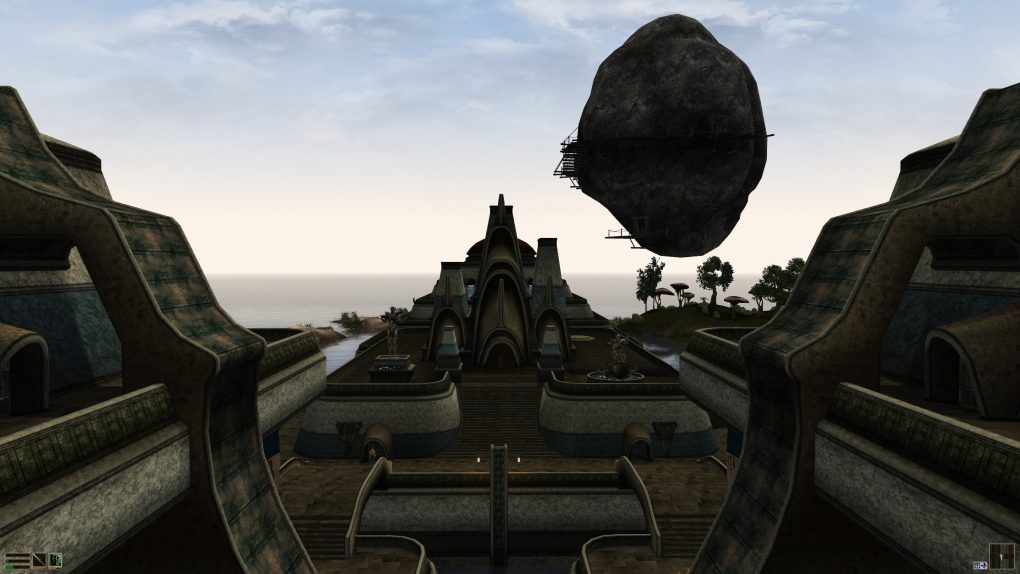
First Release: The Elder Scrolls: Arena
First Release Date: 1994
Genre: Action RPG
Developer: Bethesda Softworks, Bethesda Game Studios (current)
Publisher: Bethesda Softworks
The Elder Scrolls V: Skyrim was a smash hit, breaking records and immediately becoming one of the best selling games of all time, and it is the PC version that is most talked about due to its extensive, seemingly endless modding, from overhauls to total conversions and mind blowing graphics mods.
The first two games in this franchise, The Elder Scrolls: Arena and The Elder Scrolls II: Daggerfall, were PC exclusive. Mainstream multiplatform popularity was not achieved until The Elder Scrolls IV: Oblivion, but it was The Elder Scrolls III: Morrowind that demonstrated by far the most role-playing, best writing, and best quest design of the series. These aspects deteriorated with time, with writing and role-playing reaching an all time low in Skyrim, but attention to detail in level design peaked in Skyrim. Morrowind has the most unique, alien world, while Oblivion and Skyrim are familiar, and Skyrim noticeably shrinks its cities down into small towns instead, whereas Morrowind and Oblivion feature sprawling cities.
These are open world sandbox games, with the first three being innovative Action RPGs in their day. Arena was one of the earliest first-person Action RPGs, if not the very first. It required an impressive feat of creativity to translate RPGs into a first person action game, and Bethesda obviously succeeded.
The Sims
First Release: The Sims
First Release Date: 2000
Genre: Life Simulation
Developer: Maxis, The Sims Studio
Publisher: Electronic Arts
The Sims is a famous Life Simulation franchise that dates back to 2000 (making it the third franchise on this list that was introduced in 2000). It is also the largest franchise listed here, with the most games and most likely the most sales and players. The first game became the best selling PC game at the time, dethroning Myst. Now it is available on too many platforms to count, but PC (Windows and Mac) was the first, and also the only platform with The Sims for three years. Various Sims games remain PC exclusive to this day.
The Witcher
First Release: The Witcher
First Release Date: 2007
Genre: Action Adventure
Developer: CD Projekt RED
Publisher: Atari, CD Projekt (current)
The Witcher 3: Wild Hunt is one of the most popular recent games, and the first in this franchise to achieve mainstream multiplatform popularity. The first game in the franchise, called simply The Witcher, remains PC exclusive to this day. It also has the most RPG inspiration of all the Witcher games. The Witcher 2: Assassins of Kings was PC exclusive for about a year, although it was obviously designed for consoles judging by its level design, gameplay design, and control scheme.
Of course, The Witcher as a franchise in general does not trace its origins back to PC gaming, rather it traces them back to books written by Andrzej Sapkowski.
Tom Clancy’s Ghost Recon
First Release: Tom Clancy’s Ghost Recon
First Release Date: 2001
Genre: FPS (original), TPS (current)
Developer: Red Storm Entertainment, Ubisoft Paris (current)
Publisher: Ubisoft
Despite the name, Ghost Recon was never a Tom Clancy novel series. It began as a PC exclusive tactical shooter in 2001, but was ported to consoles a year later. Interestingly enough, the first game was an FPS, but since then the franchise has become most known as a tactical TPS.
Ghost Recon 2 is console exclusive, but is sometimes said to be the best game in the franchise. Since then, the Ghost Recon games have been multiplatform and third person. Gameplay has been simplified since the first two (and even the console version of the original Ghost Recon was simplified), but the size and scale has varied, with the latest Ghost Recon: Wildlands being the biggest.
Tom Clancy’s Rainbow Six
First Release: Tom Clancy’s Rainbow Six
First Release Date: 1998
Genre: FPS
Developer: Red Storm Entertainment, Ubisoft Montreal (current)
Publisher: Red Storm Entertainment, Ubisoft (current)
Rainbow Six was originally a novel by Tom Clancy, but a video game of the same name came out that very same year in 1998. Both this game and its sequel, Rainbow Six: Rogue Spear were timed PC exclusives for over a year, while the pinnacle of the franchise, Rainbow Six 3: Raven Shield, is only available on PC/Mac and mobile.
Mods keep Rainbow Six 3 alive and well today, easily playable, which is great news since after this game the franchise became more console focused and severely dumbed down in comparison. In these games, you command an elite counter-terrorist squad unit dubbed Rainbow Six. In Rainbow Six: Vegas and Rainbow Six: Vegas 2 you merely command two other squad members. In Rainbow Six: Siege you communicate with four other characters, but in Rainbow Six 3 you assign a pool of unique soldiers with unique stats to three separate teams. In the first two Rainbow Six games, it is four teams instead of three. This is an illustration of how downsized Rainbow Six became over time.
Amusingly enough, AI was superior in Rainbow Six 3 compared to both Rainbow Six: Vegas games. The only downside to Rainbow Six 3 compared to the first two is that you have only three teams instead of four, but given the size of the maps it works out anyway, and the pros outweigh the cons for Rainbow Six 3.
So Rainbow Six is another franchise that simply deteriorated once consoles became the focus, becoming objectively smaller and more limited games and losing the modding capability.
Unreal
First Release: Unreal
First Release Date: 1998
Genre: FPS
Developer: Epic Games
Publisher: GT Interactive, Atari, Midway Games, Epic Games (current)
That’s right, Unreal began primarily as a single player game. To this day, Unreal is PC exclusive. Unreal Tournament, usually referred to as UT99, was the first multiplayer focused title, as is every other Unreal Tournament game. Likewise, every Unreal Tournament game served as a technological showcase, just like Unreal, so in this regard the franchise has not deviated.
Unreal Tournament was ported to consoles 1-2 years after its PC release, but Unreal Tournament 2003 and Unreal Tournament 2004 are PC exclusive. UT2004 remains a gold standard for multiplayer shooters, being not only a technological showcase (for both audio and visuals) but the amount of content and quality of content, as well as the seemingly unlimited modding potential and outstanding community, made for a uniquely good multiplayer experience exclusive to PC. UT2004 outclasses every other Unreal Tournament game in every area outside of the obvious graphics quality. Endless amounts of custom maps and other user made content exists for it, and several games were born from UT2004 mods like Killing Floor and Red Orchestra. These two games began as UT2004 mods (in fact, Red Orchestra was a UT2003 mod first), and there was an unlimited amount of unique modded servers when UT2004 was popular. Probably 3 in every 5 servers functioned as different games.
The multiplatform Unreal Tournament 3 is no more than a snippet of the franchise’s past glory, hence why it died off. It simply did not offer enough, and Unreal Tournament 4 seems headed down the same path.
Wargaming
First Release: World of Tanks
First Release Date: 2010
Genre: MMO
Developer: Wargaming
Publisher: Wargaming
World of Tanks is one of the most played games in the world today, and the vast majority of its player base belongs to PC. It was ported to consoles nearly four years after its initial launch. World of Warplanes released in 2013 and is only available on Windows, while World of Warships released in 2015 to complete the trilogy and is available on Windows and Mac.
All three of these games are Free to Play (F2P) action MMOs, in which players control and do battle in the vehicles specified by the names of the games. They are not simulators, but they do have a skill curve so that they are easy games to get into but hard to master. World of Tanks remains by far the most popular one in the series.
Wolfenstein
First Release: Castle Wolfenstein
First Release Date: 1981
Genre: Top-down Action, FPS (current)
Developer: Muse Software, id Software, Nerve Software, Gray Matter Interactive, Splash Damage, MachineGames (current)
Publisher: Apogee Software, FormGen Corporation, Activision, Bethesda Softworks (current)
The Wolfenstein series is one of the oldest on this list. It started way back in 1981 with Castle Wolfenstein, a 2D top down action game written by Silas Warner. It is one of the pioneers of the Stealth genre, and a hallmark of audio development in games (for all its quirks). Released on the Apple 2 and later ported to MS-DOS, it is also an early part of PC gaming history in general.
A decade later, id Software re-imagined Wolfenstein as a 2.5D FPS and in 1992 they released Wolfenstein 3D, one of the most important and influential first person shooters of all time. Due to technological and gameplay constraints, the game was an arcade shooter, but an excellent one for its time spawning many mods and paving the way for DOOM and Quake and the rest of the FPS genre.
2001’s Return to Castle Wolfenstein was also a PC exclusive for over a year and made its debut on Windows, Linux, and OS X. Influenced by the excellent Half-Life, it combined stealth segments and action sequences like previous games in the series. A marvel of technology and polished game design, it too was highly moddable (its community is STILL active) and had an awesome multiplayer component that goes beyond what most games have today.
The quality of its multiplayer was later refined in the free PC exclusive Wolfenstein: Enemy Territory. Its quality is immense, and even though it lacked some content, the modding community ate it up and turned it into one of the best multiplayer games ever made.
Only with Wolfenstein (2009) did the series first launch on both consoles and PC at the same time. It is probably overall the weakest in the series, but still a decent and fun FPS.
Wolfenstein: The New Order released on both old gen and current gen consoles alongside PC and is an excellent game, being more story focused than its predecessors. The most recent game in this series was Wolfenstein: The Old Blood, which continues with the stronger emphasis on storytelling. The Old Blood is not brilliant, but it is a solid FPS nonetheless.
This is the last franchise we have for this article. Feel free to leave comments below!

